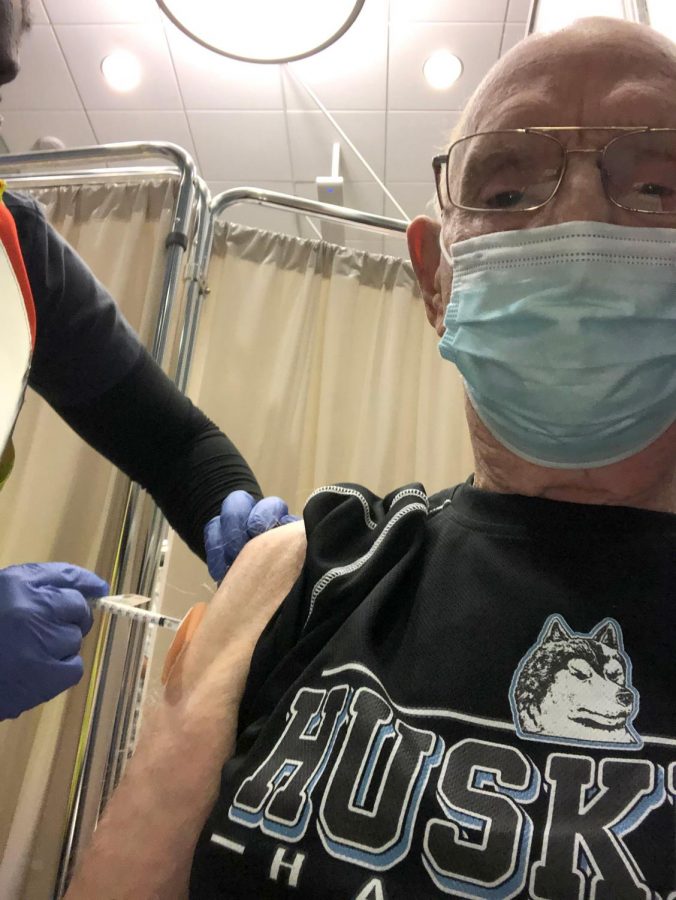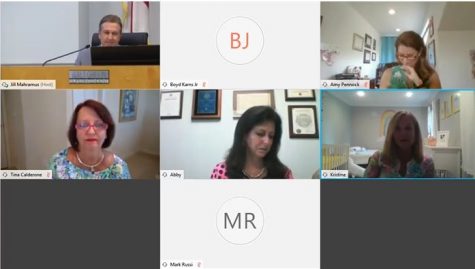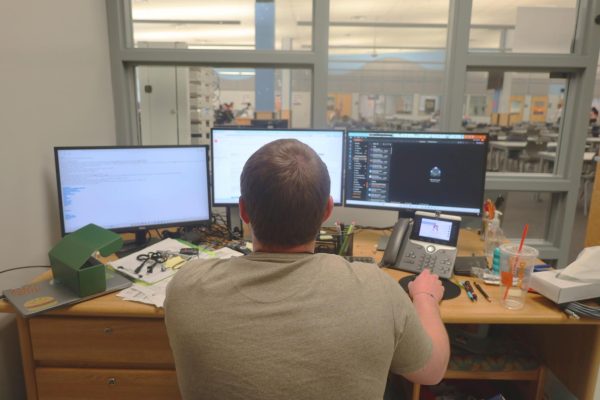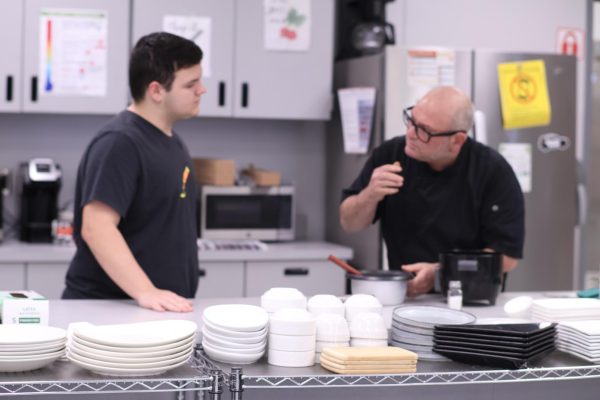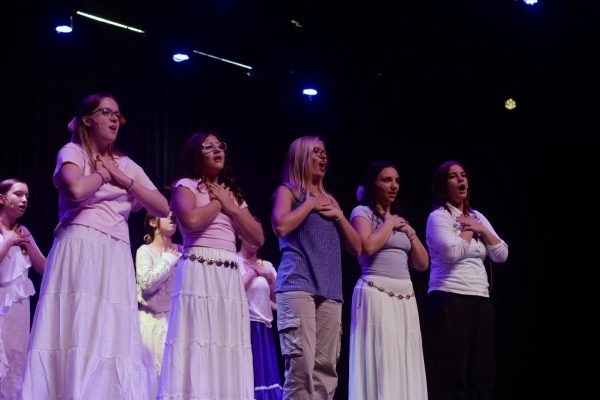A shot at normalcy
photo by Todd Dixon
Substitute teacher Todd Dixon gets his second dose of the Pfizer vaccine on Feb. 4 at the VA Medical Center in Lake Nona.
As substitute teacher Todd Dixon turned on the 6 a.m. news on Jan. 9, something piqued his interest: for veterans over 65, walk-ins for the COVID-19 vaccine administration were being accepted at the VA Hospital in Lake Nona. After spending weeks trying to book an appointment, he quickly got dressed and ran out the door.
“When I walked in, they took me right away. It was the most professional and personal operation I’ve ever seen,” Dixon said. “It was just like clockwork, it was beautiful. They even gave me a personalized pound of coffee beans, which I thought was really nice.”
The vaccination process is currently in phase one: only individuals over 65 and healthcare workers are able to receive it. Administering the vaccine takes five minutes, with a 15-30 minute observation period to make sure there is no initial reaction.
While the administration itself runs smoothly, the issue lies in getting an appointment. Often, as soon as the form to schedule an appointment is released, all slots become booked, making it a long and painful process for many to get the vaccine. Dixon and his wife, substitute teacher Mary Dixon, spent three weeks trying to book an appointment before finally finding one.
“It was tiring and confusing for us. Luckily, there was an opening at the Oviedo Mall, and my daughter happened to be with me,” Mary said. “She got me in.”
According to the Florida Department of Health, 1.84 million individuals have been vaccinated as of Feb. 4. In Seminole County, 39,000 have been vaccinated.
Vaccine basics
Developing a vaccine from scratch usually takes around 10-15 years. However, the COVID-19 vaccine was developed within a year because of existing vaccine research from similar viruses like SARS and MERS. Although there were a lot of test trials, some were concerned about the validity of the vaccine because of its quick turnaround time. Early childhood teacher Jenny Burrell was nervous before getting her first dose of the vaccine, but her fears dissipated once the doctors explained it to her.
The mRNA vaccines, Pfizer and Moderna, have relatively high success rates. Pfizer has an efficacy rate of 95%, which is recommended for individuals over 16, and it entails two doses 21 days apart. Moderna has an efficacy rate of 94.1% and is recommended to individuals over 18, with two doses 28 days apart.
“I feel the benefits far outweigh the negative. I know a lot of people had their concerns but I feel very comfortable that it was thoroughly tested,” Burrell said.
Burrell had the opportunity to get the vaccine because her daughter works as a nurse at the Orlando Regional Medical Center. Contracting COVID-19 back in November, Burnell never once second-guessed her choice to get the vaccine. She completed her series on Feb. 4.
“I was in school for only two days that month [after getting COVID-19] and I feel very lucky to have gotten through it,” Burrell said. “I would not want to go through that again.”
Todd also completed his vaccine series on Feb. 4, and the Dixons, the school’s best known and longest-tenured substitutes, hope to return back to school in March after Mary completes hers on Feb. 11.
“We have been subbing for 15 years at Hagerty and had to take this year off because of our age,” Mary said. “We really miss all the kids and the teachers, and can’t wait to get back.”
Future rollout
Teachers are among the several groups of people in line for the vaccine during phase two of the rollout. According to the CDC, phase two includes K-12 teachers, essential workers, people with underlying conditions, and a few other demographics. Phase three includes young adults, children, and the general population. However, distribution to the general population could take months depending on the volume of vaccines. Though the majority of students have come back to school face-to-face despite COVID-19 concerns, some students on Seminole Connect have decided to stay home instead because vaccines are not available.
Sophomore Catherine Bunn is part of the many students to remain on Seminole Connect. She and her family fear getting COVID-19 because of her at-risk family members.
“I have had COVID-19 and suffered; it was very painful. I have no underlying conditions on top of that so it’s not ‘just a cold’ like some say,” Bunn said. “I would definitely take the vaccine if it was available [to me]. It should be mandatory if we want life to go back to normal.”
On the chance that vaccines are not available in the fall, students feel conflicted about whether going back to school would be the right choice. Junior Krithika Subramanian feels like it depends on the number of cases; if high, she would want to stay home, but if low, she would be willing to come back.
“Personally, it would take me a while to come back to school if there were no vaccines,” Subramanian said. “I don’t want to be in an environment where there is a high chance of catching COVID-19 and spreading it to my family.”
Burrell feels everyone should be vaccinated, even if there are side effects. The most common reactions after vaccine administration are pain and swelling at the shot site, fever, chills, tiredness and headaches. These are all similar to the typical symptoms of the average flu vaccine. After getting their first dose, Todd experienced slight arm pain for several hours, while Burrell ran a fever for a couple of days.
“The reaction is far less than the actual disease. I have had several surgeries and the flu multiple times. Getting COVID was worse than any of those,” Burrell said.
If Florida residents want to get the vaccine in Seminole County, for now they will have to get it administered at the empty Sears located in the Oviedo Mall. Appointments are required before arrival and have to be booked online.
Your donation will support the student journalists of Hagerty High School. We are an ad-free publication, and your contribution helps us publish six issues of the BluePrint and cover our annual website hosting costs. Thank you so much!

